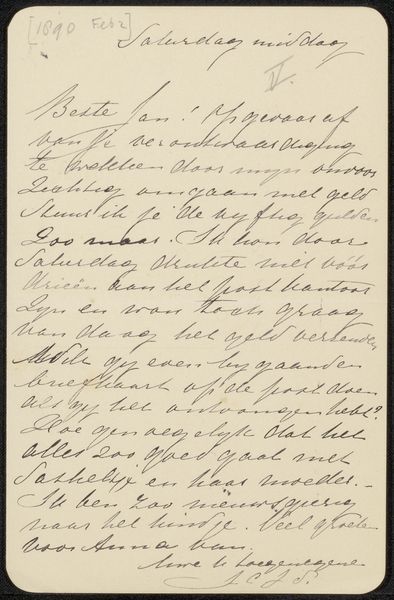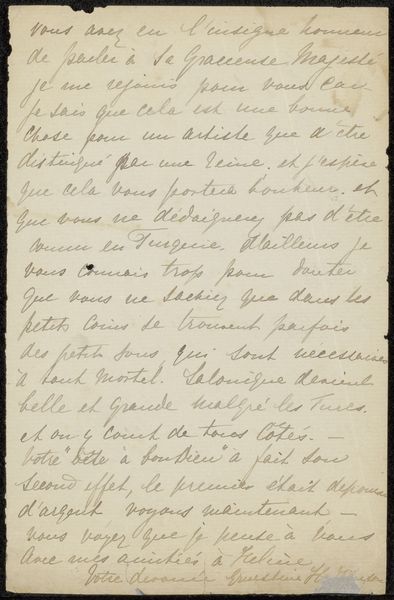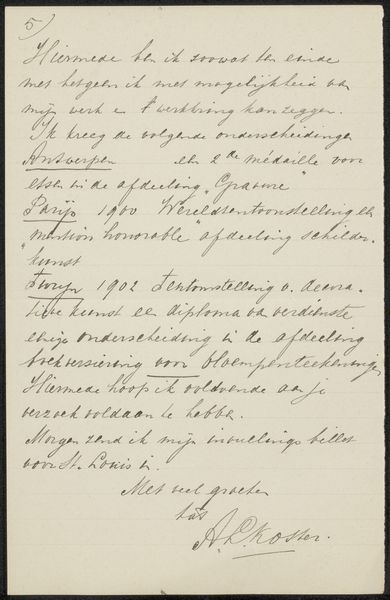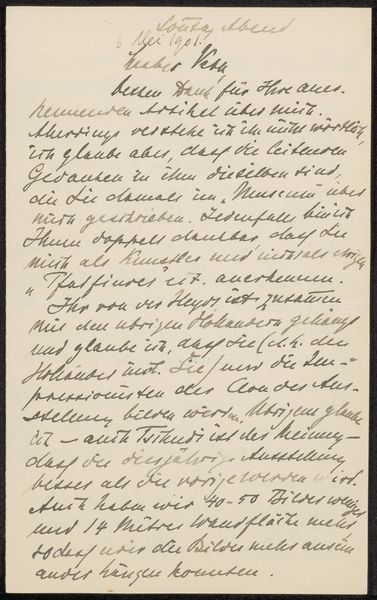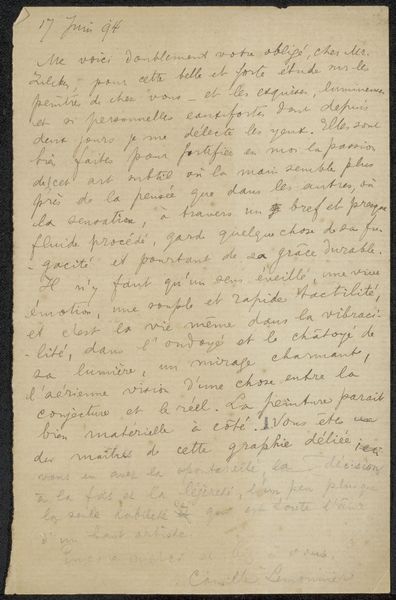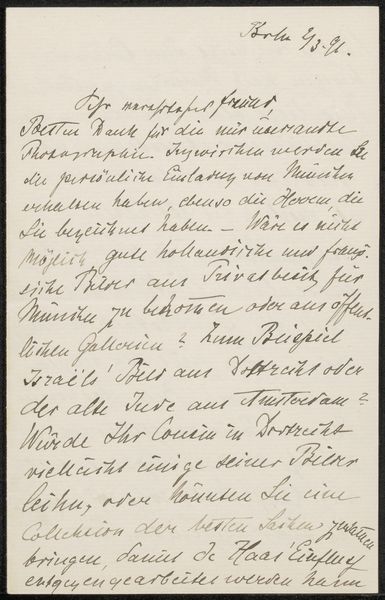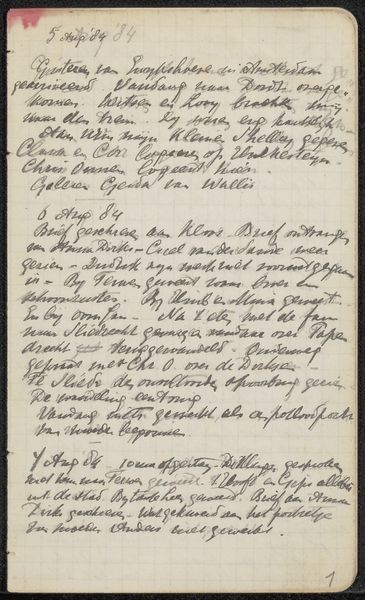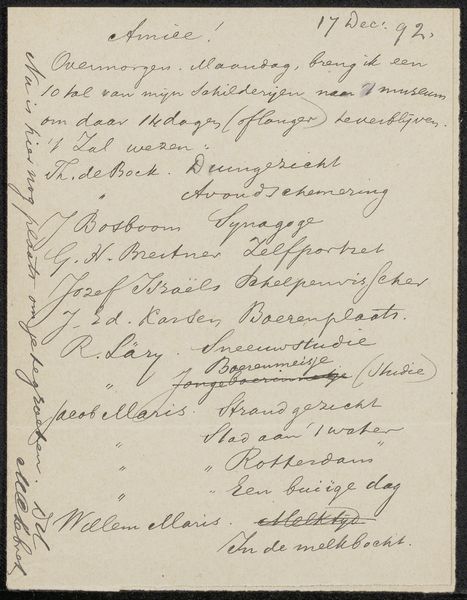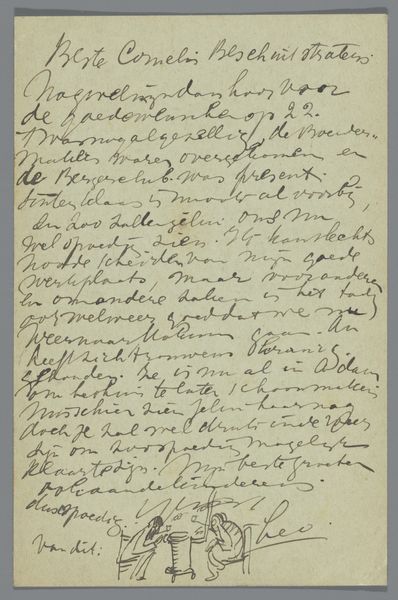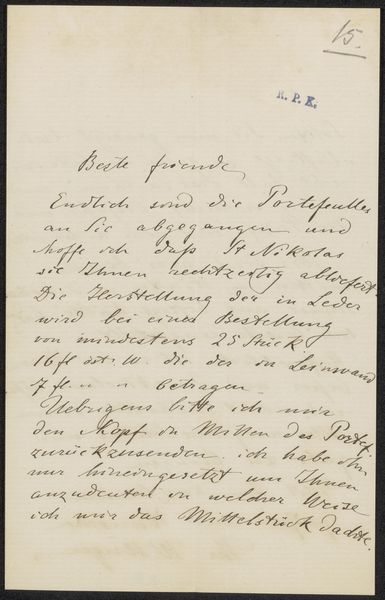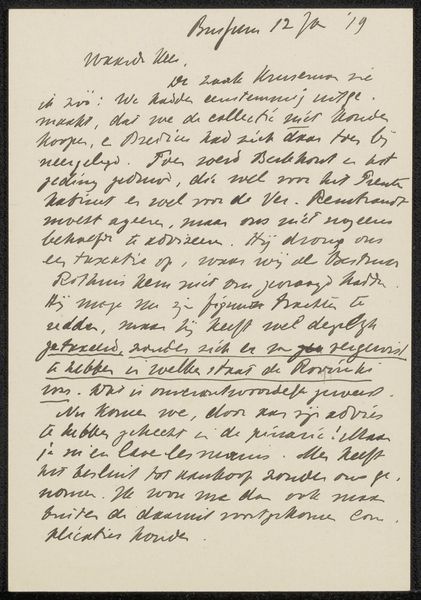
drawing, paper, ink, pen
#
drawing
#
paper
#
ink
#
pen
#
calligraphy
Copyright: Rijks Museum: Open Domain
Editor: We’re looking at “Brief aan Philip Zilcken,” a letter likely dating from between 1903 and 1914. It’s ink on paper, just beautiful penmanship. I can’t read the French, but I’m struck by how physical the communication feels despite being words on a page. What do you see here? Curator: Well, consider the social context. This isn't simply writing; it’s labor. Someone – and it seems, from the context of its address, to have been written by someone in the fine arts milieu – invested time, energy, and specific skills in crafting this message, skills acquired through training and practice, just like any artisanal process. Editor: Right, the physical act of writing itself as work. Curator: Precisely! Look at the pressure of the pen, the consistent flow of ink. The quality of the paper, even – that affects the final product. These aren't accidents; they are choices dictated by available resources, by the writer's skill, and, ultimately, by a market for literate correspondence. The letter functions as a commodity too; it's not just a heartfelt message. How might the materials available impacted other artist/artisan interactions? Editor: So, thinking about it that way, we’re connecting artistic creation to everyday materials and labor practices. I hadn't really considered it. Curator: Exactly! By foregrounding the materiality of the letter, we challenge this artificial separation between ‘high art’ and mundane tasks like writing a letter, both rely on skilled craftsmanship and available supplies to communicate! Editor: This really encourages me to think about art, and everything, as part of larger material systems! Curator: Absolutely, by focusing on the letter's materiality and its production, we gain insight into social conditions around creative processes.
Comments
No comments
Be the first to comment and join the conversation on the ultimate creative platform.

